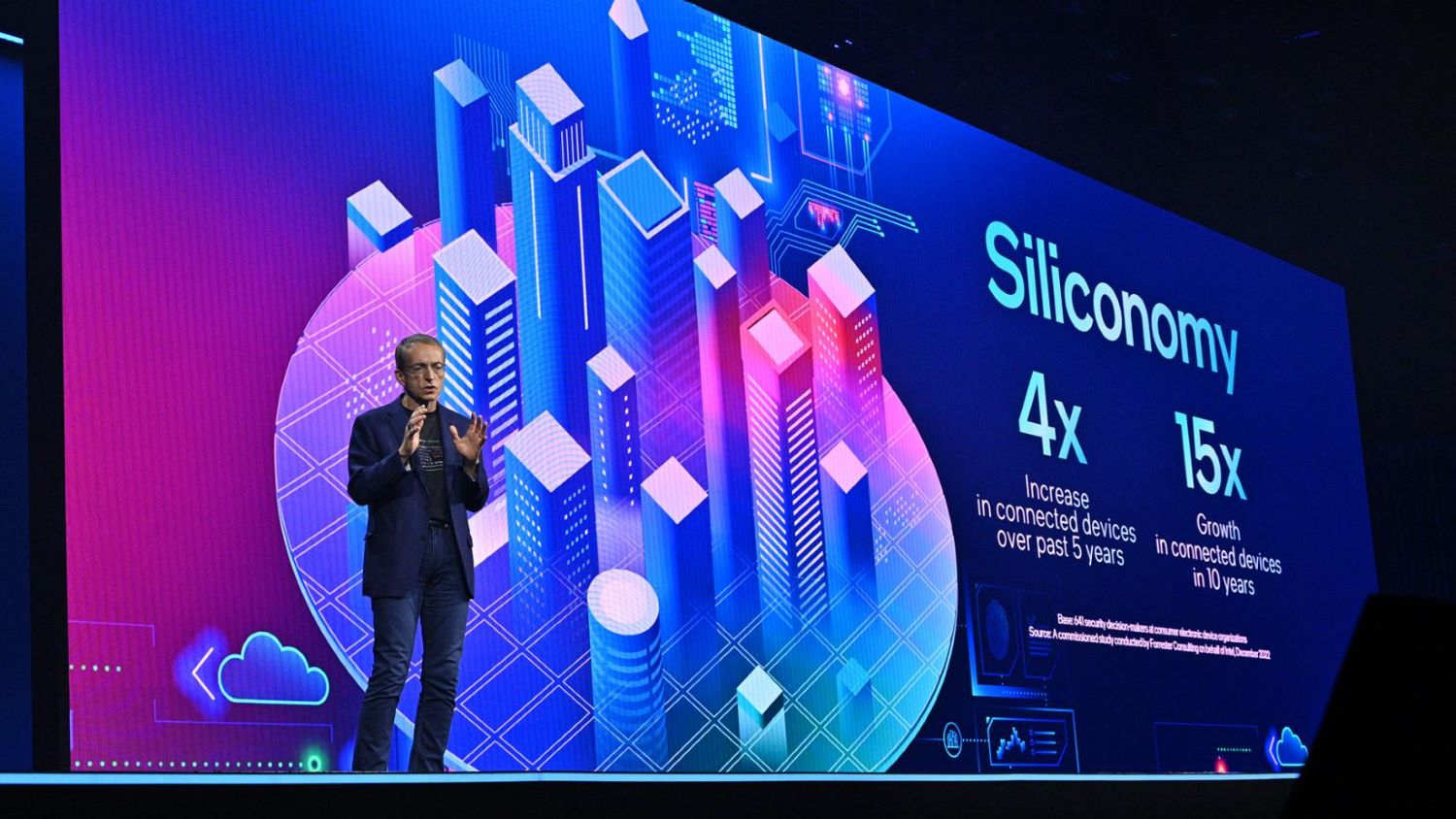ARM Wrestle – Is Qualcomm’s at the Top of the Food Chain?
Apple Silicon has truly hit it out of the park for Apple and, in fact, for the whole industry. It’s basically proven that leveraging ARM-based processors to power consumer products, especially laptops, is a game-changer. To put it simply, this means that laptops can have more power and last longer, thanks to the increased efficiency brought about by ARM-based processors.
The M1 chip is as powerful as high-end processors like the Intel Core i9, but now it’s in a 13-inch MacBook or a super-thin desktop like the new iMac. It’s like having a super-strong computer in a really small box.
That’s how the plot of the story has been going since 2020, Apple has always been the silver bullet, but things just flipped on their head in October 2023 when Qualcomm coming through from nowhere to outperform Apple’s M series chips.
There’s a New Sheriff in Town – Qualcomm Bombshell Announcement
At this year’s Qualcomm Snapdragon Technology Summit, the star of the show wasn’t a smartphone chipset for the first time. It took a different direction with a focus on a new System on a Chip (SoC) for laptops named Snapdragon X Elite. The aim is to inject new energy into Windows on Arm by offering a combination of improved performance and extended battery life.
Qualcomm also hosted an exclusive event for members of the press and analysts, providing a sneak peek into the capabilities of the Snapdragon X Elite and illustrating how it compares to existing chips from Intel, AMD, and Apple.
“We are embarking on this journey, and our goal when we set ourselves to develop the CTU is to set the bar for the industry and establish the performance leadership for Windows PC. We have delivered, and I have to tell you, we exceeded our own expectations,” said Cristiano Amon, President and Chief Executive Officer of Qualcomm Incorporated said.
He continued, “So based on the announcement today, I’m very pleased to tell you that there is a new sheriff in town—the Orion CPU is the new leader in mobile computing period has been designed.”
Qualcomm is making bold performance claims for its new processor, When stacked against Intel’s Core i9-13980HX, Qualcomm’s processor achieves similar multi-threaded performance with an amazing 70% reduction in energy usage. Such claims, if validated, represent an important improvement in efficiency and performance, potentially transforming the landscape of mobile and laptop processors.

When comparing Qualcomm’s Snapdragon X Elite with Apple’s year-old M2. Notably, the Snapdragon X Elite exhibits superior single-threaded performance even in its 23-watt mode, surpassing the M2 Pro found in a MacBook Pro.
Its performance further excels when subjected to a higher thermal budget. However, multicore performance is contingent on the number of cores. The M2 Pro, a significant competitor, proves slightly faster than the Snapdragon X Elite in its 23-watt mode but falls behind when bumped up to 80 watts.
assuming these performance claims hold true, we can anticipate boosted performance in everyday mainstream tasks. This is particularly noteworthy when factoring in the constrained thermal conditions of laptops, along with the promise of impressive battery life.
One thing has to be said that before all of this, Apple appears confident in the potential for Apple M-series chips to outclass even high-end chips used in desktop PCs. However, Qualcomm just pops up from nowhere and now the iPhone Maker has lost the monopoly status.
The big question is, how did Qualcomm achieve all of this so unexpectedly?
Magician Has Used Some Tricks – Snatched Talents from Rivals
Ah, yes, it all comes down to Qualcomm snagging talent from Apple. It started with the formation of the Nuvia team back in 2019. This crew includes heavyweights like John Bruno, Manu Gatti, and Gerald Williams III, who were top-tier chip designers at Apple. They were the masterminds behind several iterations of Apple’s iPhone processors.
Williams was instrumental as the chief architect in shaping all of Apple’s CPU designs, including the cutting-edge lightning core in the A13. The three founders collectively hold an impressive portfolio of over 100 patents in systems engineering and silicon design. The founding team also brings extensive experience from holding engineering leadership roles at major tech companies like Google, Apple, ARM, Broadcom, and AMD.
In the past, Apple got salty about Nuvia when they weren’t happy that some of its lead CPU designers took their expertise elsewhere. In December 2019, Apple sought to sue Gerard Williams for breach of contract. They claimed that Williams started work on Nuvia and recruited some of his fellow colleagues while still employed at Apple.
Williams, however, stated that Apple engaged in anticompetitive practices in an attempt to prevent him from co-founding with John Bruno.

But with a little bit of trouble on the way, Nuvia seemed to be unaffected. The company is going for a big change in the industry, calling it a “step up in how fast computers work and how efficiently they use power.” Usually, people might think it’s just fancy marketing talk, but their great track record and recent successes prove that it’s the real deal.
Sensing their opportunities, Qualcomm decided to buy this fresh startup in January of 2021 for $1.4 billion. After that, they included the technologies from the acquired company in their plans for future chips, and the X Elite is the first product to come out of it.
Somebody said that the acquisition of Nuvia was a major move that could eventually shake up Qualcomm’s entire silicon portfolio. And now, Qualcomm looks good in the new stunning outfit. But this is not where it ends, the very next week Apple hits back by announcing the M3 chip.
This is where the competition is heating up.
Apple Dilemma – The iPhone Maker Bites Back But Can’t Break up
Apple, without losing a beat, unveiled a new family of M3 chipsets on October 30, shortly after the birth of Snapdragon X Elite. The new M3 lineup of chips is built using a 3-nanometer architecture and everything Apple has learned with the previous generations of M-series processors.
In a head-to-head battle, The Apple M3 Max outperforms the Snapdragon X Elite in multi-core performance, boasting a 16-core CPU compared to the Snapdragon’s 12-core CPU.
Early Geekbench benchmarks show the M3 Max scoring 20,785 in the multi-core test, surpassing the Snapdragon X Elite’s 15,382. This suggests Apple’s strength in multi-core tasks like database management and rendering. Single-core performance is nearly identical.
Apple leads in port connectivity with Thunderbolt 4 ports on the M3 Max, while Qualcomm’s solution adopts USB 4.
While the Snapdragon X Elite provides more hardware options across various Windows laptop manufacturers, excelling in wireless connectivity with Wi-Fi 7 and 5G, the M3 Max offers Wi-Fi 6E, and lacks 5G support as Apple always does.
And this is the pain point of Apple, and they knew it. That’s the driving force behind their effort to build a 5G modem for its in-house chips.
Yet, Apple’s attempts to move away from Qualcomm have faced additional delays due to the complexity of replacing the intricate Qualcomm component. The in-house modem needs to match or exceed the performance of Qualcomm’s modem, which has been the powerhouse behind network connectivity on iPhones for years. As of now, Apple is lagging behind its initial timeline.

Since 2018, thousands of employees have been dedicated to the project, but Apple appears to be still years away from finding a solution. The goal is to create a modem that can download data at a faster rate than the current one allows. However, based on insights from individuals familiar with the project, achieving this goal seems unlikely in the near future given the current state of development.
Originally, Apple aimed to roll out its in-house modem by the year 2024. However, sources familiar with the development, as reported by Bloomberg, indicate that this goal now appears to be unrealistic. There are signs pointing to a potential delay until at least the end of 2025 or early 2026, coinciding with the conclusion of Apple’s extended agreement with Qualcomm.
The agreement, initially set to conclude by 2024, was extended until 2026, announced just a day before the iPhone 15 launch. This extension merely affirmed that the company’s efforts to develop its technology had, up to that point, been less than successful.
The battle between Apple and Qualcomm has been making the news these days. However, there’s a giant that seems to be quiet in the chip race, we are talking about Intel.
The King Has Been Dethroned – How is Intel Doing?
Intel has been facing a tough time in the chip industry lately.
Once celebrated as the largest semiconductor manufacturer globally, Intel has now dwindled from its former prominence. Factors such as the global chip shortage, a significant drop in PC sales, and the ongoing tech conflict between the US and China have collectively played a role in the company’s gradual decline in recent years.
As Intel works on rebuilding itself by restructuring its workforce, the company is also dealing with patent lawsuits from other chipmakers. To make matters worse, the head of Intel’s foundry services arm, Randhir Thakur, recently resigned just as the company was beginning its revamp, according to The Register.
Recent data highlights how Intel has lost its top spot as the world’s largest semiconductor company. A significant factor contributing to Intel’s declining stock price over the past year has been a substantial decrease in demand for PCs.
Consequently, Intel stocks have experienced a sharp decline, falling by 45% to reach $27 in mid-October 2022 – the lowest point since August 2015, as reported by Yahoo Finance. To put it in perspective, the company’s stock prices are also 60% lower than their peak levels from the previous year.
Despite some setbacks, they’re releasing their new generation of laptop chip, but so far, according to what we know, Intel’s new laptop processes, codenamed Meteor Lake, offer a slight improvement.

However, they prioritize power efficiency and all-day battery life. Intel has announced its hotly anticipated 14th gen Core Ultra Meteor Lake-based processors, set to launch on December 14th. The new CPUs offer all the performance of the 13th gen Raptor Lake chips with half the power draw.
With Meteor Lake, Intel is finally joining its competitors by introducing its first CPU that uses independently fabricated chiplets. Some of these tiles will be created using Intel’s bleeding-edge Intel 4 process, while others will use TSMC’s 5 NM process.
The chips incorporate a new type of efficiency core, which Intel calls a low-power Island, designed to handle light workloads without powering up a more energy-hungry compute tile. Reportedly, this design doubles integrated graphics performance per watt.
Unfortunately for Intel, AMD’s next-generation processors based on the Zen 5 architecture are just around the corner and are expected to perform better. And AMD is not the only one who joins the race.
The Game is Getting Hotter – Nvidia and AMD Join the Race
Shortly after the bombshell announcement from Qualcomm, it’s reported that Nvidia, the dominant force in AI chips, is apparently expanding its reach to challenge Intel Corp and its longtime stronghold of personal computer (PC) chips.
There are reports suggesting that the AI chip giant is leveraging Arm Holdings’ technology to create central processing units (CPUs) capable of running Microsoft’s Windows operating system.
Supposedly, Advanced Micro Devices (AMD), Intel’s primary competitor, is also working on chips for PCs and, like Nvidia, would be incorporating Arm’s technology. If these developments from Nvidia and AMD turn out to be true, it could mean that both tech giants might introduce PC chips by 2025.
In a nutshell, a revolution in the PC market is on the horizon, as both Nvidia and AMD are gearing up to introduce CPUs based on the Arm architecture. Nvidia is reportedly planning to launch CPUs explicitly designed to run Windows, expanding its portfolio beyond its dominance in AI, HPC, and consumer graphics cards.

Although Nvidia’s intentions are not officially confirmed yet, this move signals a significant shift in the industry landscape. Meanwhile, AMD is also set to follow a similar path, indicating a potential transformative period for PC technology.
This shift is prompted by Microsoft’s encouragement for other players to enter the Arm-based systems market, especially as the current exclusivity deal with Qualcomm is set to conclude next year. Back in 2016, Microsoft selected Qualcomm to bring the complete Windows experience to devices powered by Arm.
While Nvidia and AMD’s foray into the PC chip space will not happen for the next two years, it will be interesting to see how the rivalry between Qualcomm, Apple, and Intel will turn out.









